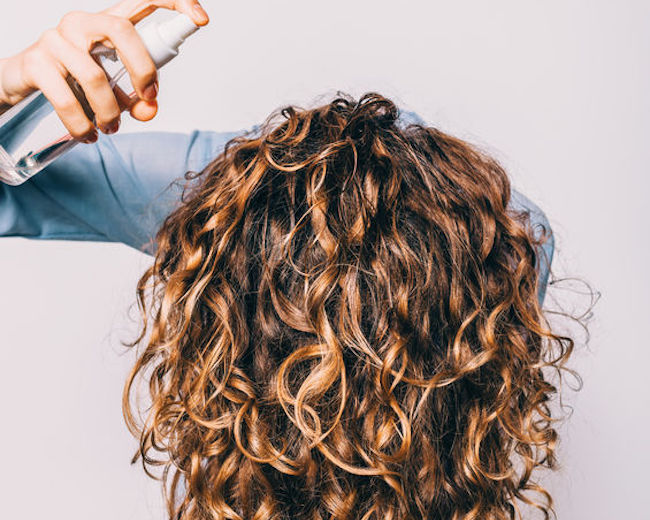How to fight the frizz factor
Every curly-haired girl’s number one enemy? Frizz. Beating this frustrating foe is difficult, but we’re here to help.
Anyone with curls is probably familiar with the struggle of keeping them under control and in tip-top condition. The challenge with curly hair is that it’s generally very dry and constantly looking to absorb moisture from any source it can.
“If you’re in a climate where there’s a lot of moisture in the air – whether it’s caused by humidity or from being near the ocean – your hair is going to draw that moisture in, which will cause it to frizz,” explains hair expert Brian Warfield.
It’s like a sponge
Brian compares curly hair to a shapeless, dry sponge. As soon as water is added to the sponge, it begins to absorb it, becoming soft and taking on real shape until it gets to the point where it’s absorbed as much as it can hold. At this point, the water starts to run out of the sponge, as it can’t absorb any more.
Hello, hydration!
When it comes to naturally curly hair, “the best way to control frizz, which is the maintenance of an absence of water, is to add moisture to the point where the hair can’t absorb any more,” explains Brian. “That means you’ve got to use moisturising products to shampoo, treat and condition your hair.” Remember that damaged or colour-treated hair will have increased porosity, which means, “moisture will easily move in to that hair, frizz it, and move out again, and you will still have dry hair,” Brian warns.
Get familiar with what exactly your hair needs
The cuticle of the hair is likened to scales on a fish or tiles on a roof. They overlap, sitting on the outside of the hair to protect the inside. In between those cuticle layers is a sealant called a ceramide, Brian explains. That helps the hair regulate the amount of moisture that comes in and goes out. When you have natural hair, the ceramides are intact so they prevent moisture from leaving the hair, as well as getting in.
When you chemically treat hair through relaxation methods or colouring, those ceramides are destroyed or dissolved. “You still have the cuticle in place but there is no sealant. It’s like closing a broken window. The window is closed, but air can still go in and out,” says Brian. If you use a specific type of treatment that replaces ceramides, you have a better chance of sealing the hair shaft to prevent loss of moisture.
What about using a serum to tame those tresses? The bottom line is if the hair is dry and there is moisture available, it will find a way to get it. Serum won’t make any difference. “The best way to combat dryness is to moisturise hair as much and as often as possible. There’s no foolproof way to prevent frizz, but there are ways to reduce it,” says Brian. “Keep hair covered from the sun and use specific moisturising treatments during the course of your normal maintenance routine.”
IMAGE CREDIT: 123rf.com
Products featured in this article
-
Hask
Shampoo Shea Butter & Hibiscus Oil
R 200.00 -
Hask
Conditioner Shea Butter & Hibiscus Oil
R 105.00 -
Hask
Keratin Protein Blow-Out Balm 148ml
R 19.00 -
Hask
Macadamia Oil Hydrating Deep Conditioner Hair Treatment 50g
R 20.00 -
Hask
Argan Oil Argan Oil Repairing Shine Hair Oil 59ml
R 200.00



